Is There a Solution for Cellulite?

Cellulite is the term given to the dimpled skin on the abdomen, buttocks, and thighs of most healthy adult women. Since it is almost universal in adult females, it is considered normal. However, marketers and Hollywood have influenced popular culture to believe the orange-peel-like appearance of cellulite is undesirable.
Signs of Cellulite
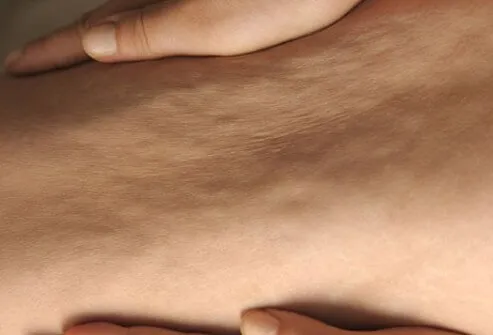
Cellulite, which is composed entirely of normal fat cells, is not necessarily a sign of obesity, inactivity, or ill health. Because women characteristically have more subcutaneous (under the skin) fat than men, it is reasonable to expect females to have more cellulite.
Causes of Cellulite

New noninvasive imaging along with digital 3-D technologies helped show how cellulite is caused by fat deposits that sit in between collagen fibers. The skin in areas of cellulite seems to package fat lobules differently and more superficially than unaffected skin. Why this happens is still unclear.
Myth: Skinny People Don't Get Cellulite
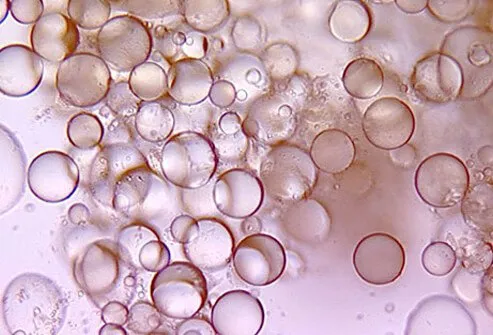
Even slender women in excellent physical condition can have cellulite.
Risk Factors You Can't Control

Being a female seems to be the major risk factor for cellulite, and it can run in families. Cellulite is most obvious in overweight adult females after puberty. Hormonal changes such as pregnancy or menopause can also cause cellulite.
Risk Factors You Can Control

Although prevention of cellulite may not be possible, it is reasonable to pursue a healthy lifestyle. Getting plenty of rest, eating a well-rounded diet high in fruits, vegetables, nuts, and whole grains, along with a consistent exercise regimen will go a long way in controlling the appearance of cellulite.
Myth: Tanning Can Hide Cellulite

The quest to tan, either by sunlight or artificial ultraviolet sources, to disguise the appearance of cellulite is a senseless and expensive waste of time that may even make the problem appear worse. In addition, ultraviolet light is a major risk factor for skin cancer.
Treatment: Weight Loss
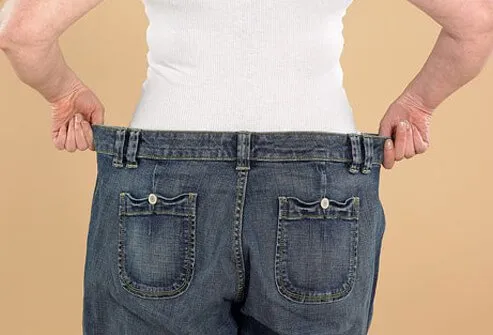
It seems counterintuitive, but weight loss does not always improve the appearance of cellulite. In fact, in certain individuals, weight loss can worsen its appearance.
Topical: Retinol Cream

In reviewing new potential treatments for cellulite, one must be quite critical in assessing the quality of any particular study and the likelihood that its results are reproducible. Because there are so many different cellulite treatments available, it seems probable that no one treatment is significantly better than any other and that none of them will make any long-term difference. For example, it is unlikely the application of a cream to the surface of the skin could affect dermal fat cells under the skin or that it could produce a measurable change in skin that could camouflage cellulite.
Topical: Methylxanthine Creams

There is no compelling evidence that creams containing caffeine, aminophylline, or theophylline can have a beneficial effect on cellulite.
Topical: Herbal Creams

Herbal creams whose manufacturers claim that they reduce the appearance of cellulite suffer from the same shortcomings as other topical therapies. There are no scientific studies that prove they can penetrate deeply enough to have a real effect. However, some of the creams contain chemicals that could produce allergic reactions in some people.
Massage/Suction

The application of devices that press or suck the skin (lipomassage) is not likely to produce a lasting improvement in cellulite. However, one has been approved by the FDA for a temporary reduction of cellulite. When treatments stop, the cellulite will likely return. It is unlikely these devices could be harmful, so if it is a pleasurable experience and you can afford it, why not?
Radiofrequency

Devices that produce heat and project radio waves into the dermis (a layer of skin), presumably destroying fat cells, are very popular. They are termed "noninvasive," which simply means they are unlikely to damage the most superficial layers of the skin. They may produce temporary results, though their long-term usefulness is debatable.
Laser Devices

Laser light can be used to destroy fat cells, but its effect on the improvement of cellulite remains unknown. It may provide temporary benefits.
Liposuction

Liposuction is not recommended to treat cellulite because the fat that is removed is subcutaneous, below the level where the fat cells that cause cellulite reside. It may occasionally even worsen the appearance of cellulite.
Subcision
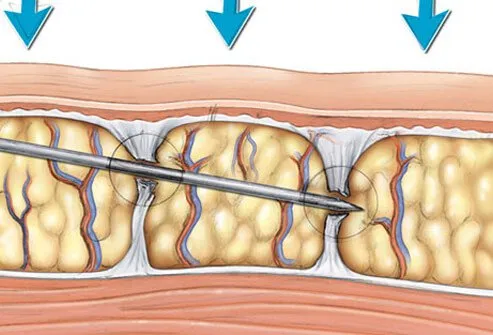
This is a surgical technique whereby the bands of dermal fibrous tissue are severed by a needle, “freeing” imprisoned fat cells and thereby supposedly reducing cellulite. The treatment is expensive, and so far, no studies show it is effective.
Mesotherapy
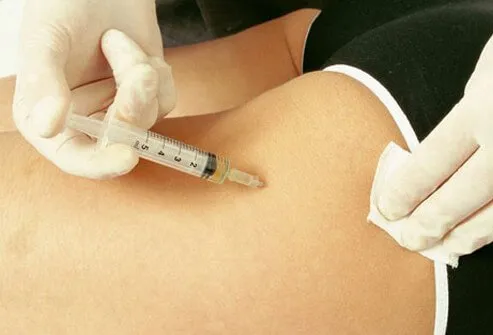
The injection of chemicals into the fat to dissolve it is possible. Such chemicals are easily available and have destroyed fat in animal studies. However, the injection of any substance into the precise location where the fat cells that cause cellulite are located would be difficult. The FDA warns against using these unapproved procedures.
Body Wraps

It seems reasonable to expect that a tight compression bandage applied to an extremity for an extended period of time would produce a decrease in size, perhaps by squeezing out fluids. However, this would have no effect on fat cells and within hours, the body would return to its precompression size, and the such wraps have no effect on cellulite.
The Cellulite 'Cure'

There is no proven "cure" for cellulite, and treatments are problematic for this purely cosmetic problem. Be skeptical about the motivations of those who seek to convince us that cellulite is a problem and then propose solutions.
The Bottom Line: A Healthy Lifestyle

Though a balanced diet and exercise may not get rid of your cellulite, they can improve your muscle tone. A healthy lifestyle may reduce the desire for cellulite therapy.
Cellulite Facts and Treatment Options
This tool does not provide medical advice. See additional information: 
© 1996-2024 WebMD, LLC. All rights reserved.
